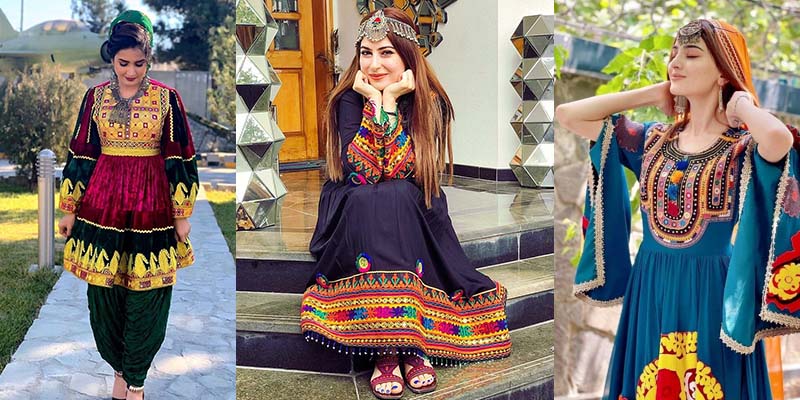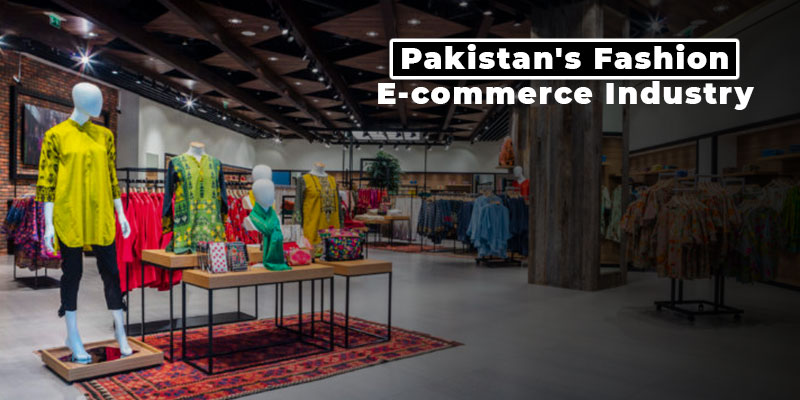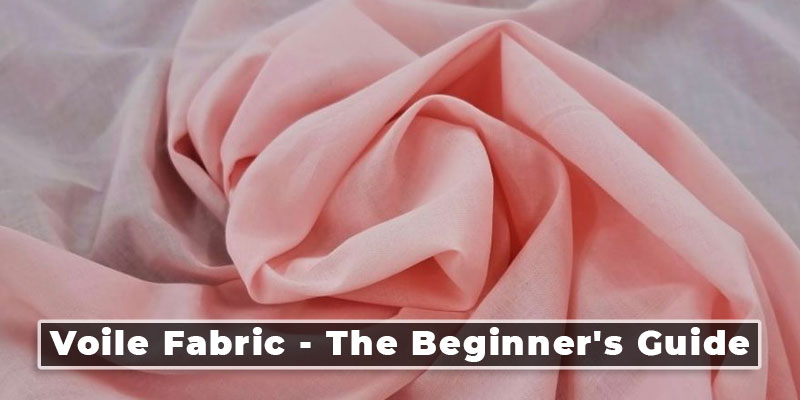Reviving Pakistan's Cultural Legacy: Pakistani Traditional Dresses

In Pakistan, traditional dress is not just a piece of clothing; it's an embodiment of culture and heritage. It speaks volumes about the history, customs, and traditions of the region. Pakistani traditional dresses come in various styles and designs, each reflecting a different story and meaning. The importance of traditional dress in Pakistani culture cannot be overstated. It's an essential part of the country's identity, and it brings people together, whether it's through weddings, festivals, or other cultural events.
Traditional dresses not only showcase the beauty and diversity of Pakistan but also serve as a reminder of the country's rich past. Beyond their cultural significance, traditional dresses also have practical uses. For instance, they are comfortable to wear in the hot and humid climate of Pakistan.
Pakistani traditional dress is not just limited to the country's borders but is also appreciated and worn by people around the world. The intricate designs, beautiful embroidery, and vibrant colours of Pakistani traditional dresses have captured the attention of people worldwide, making them a symbol of cultural identity and pride.
From Punjab to Gilgit-Baltistan
Pakistani Punjabi Traditional Dress
"Jee aya nu" to the world of Punjabi fashion, where every stitch tells a story and every outfit stands alone as an expression of heritage and tradition. The Punjabi traditional dress of Pakistan is a feast for the eyes, blending vibrant colours with intricate embroidery and embellishments.
From the graceful grace of the Patiala salwar to the stunning elegance of the Phulkari dupatta, these Pakistani Punjabi traditional dresses for women are a true reflection of the Punjabi spirit - lively, bold, and full of warmth.
Pakistani Sindhi Traditional Dress
The beauty of Pakistani Sindhi traditional dresses for women is unmatched. The vibrant colours, intricate embroidery, and flowing fabrics exude elegance and grace. Whether it's a ghagra choli, a simple cotton kameez, a dazzlingly ornate Ajrak, or a saree, every piece tells a story of culture, tradition, and pride. "Jiye Sindhi": Long live Sindhi culture! With its rich cultural heritage and timeless beauty, the Sindhi dress is a true masterpiece that continues to captivate the world.
Pakistani KPK Traditional Dress
د پښتون نیری جنون” ( Pashtun’s Passion and Craze) is not just a phrase but a way of life for the strong and resilient women of KPK. The traditional dress worn by these women reflects their love for their culture and their commitment to preserving their identity.
The traditional dress of Khyber Pakhtunkhwa is the “Shalwar Kameez," which is similar to the Punjabi style but with a more loose and flowy design. The women of this region also wear a long scarf called a chadar.
The intricate embroidery and bold colours of the dress are a testament to the beauty and grace of the Pukhtoon women. It is a symbol of their strength, courage, and unyielding spirit. Let د پښتون نیری جنون” guide you to embrace the beauty and power of these traditional dresses and honour the women who wear them with pride.
Pakistani Balochi Traditional Dress
The beauty of Balochi culture lies in the intricate details of their traditional dresses for women, which are not only visually stunning but also embody the rich heritage and traditions of Pakistan. From the vibrant colours to the delicate embroidery, every aspect of the dress tells a story.
The traditional dress of Balochistan is the “Shalwar Kameez," which is similar to the Punjabi and KPK styles but with a more vibrant and colourful design. The women of this region also wear a long, flowing robe called a burqa.
As the Balochi phrase goes, "Daman bari Goshay," meaning the hem of the dress is embroidered with love and care, reflecting the deep connection and respect the Balochi people have for their culture and customs. Experience the magic of Pakistani Balochi traditional dress and feel the essence of Balochi culture.
Pakistan’s Azad Jammu and Kashmir Traditional Dress
When it comes to Azad Jammu and Kashmir, the vibrancy and richness of the culture are reflected in the colourful dresses of the women. The traditional dress of Azad Jammu and Kashmir is the "Pheran," which is a long, flowing robe made of wool or silk.
The women of this region also wear a headscarf called a "Dorru." Adorned with intricate embroidery and intricate patterns, these dresses not only enhance the beauty of a woman but also embody the essence of the region's rich history and traditions.
So, if you want to experience the charm of Azad Jammu and Kashmir, don't forget to indulge in the vibrant colours and exquisite designs of their traditional dresses and become a living embodiment of the phrase "chool wangan phul," which describes the exquisite beauty of a woman dressed in traditional attire.
Gilgiti Traditional Dress
Gilgit-Baltistan, a land of majestic mountains and vibrant culture, is home to some of the most exquisite traditional dresses in Pakistan. The dress includes a long shirt, or kameez, paired with a wide skirt, or shalwar. Women also wear a scarf or dupatta to cover their heads and shoulders.
The outfit is usually made of fine-quality fabric and adorned with intricate embroidery and embellishments. Gilgiti dresses make them a must-have for any female who wants to add a touch of grace and sophistication to her wardrobe.
Whether you're attending a wedding or a festival, or simply want to feel beautiful, a Gilgiti dress is sure to make you feel like a queen. So, embrace the beauty of Gilgit-Baltistan and adorn yourself with the finest traditional dresses that this region has to offer.
Modern Adaptations and Variations of Traditional Dress for Women
In some cases, traditional dress has been modified to suit modern requirements, such as lighter fabrics and simpler designs. In other cases, new styles have emerged that incorporate traditional elements, such as the fusion of ethnic prints with Western silhouettes. These modern adaptations and variations not only offer a fresh take on a traditional dress but also provide a platform for cultural exchange and appreciation.
Our Responsibility
Preserving and promoting traditional dress in Pakistan is crucial for maintaining the country's rich cultural heritage. We must take action to support local artisans and craftspeople who specialize in creating these unique garments.
By wearing traditional dress, we can not only celebrate our cultural identity but also support local economies. Let's make a conscious effort to preserve and promote Pakistani traditional dress by incorporating it into our daily lives and encouraging others to do the same. Together, we can ensure that these precious cultural treasures are passed down to future generations.
Conclusion
As a Pakistani, it is our moral obligation to learn and educate ourselves about our customs, norms and traditions.
Whenever it comes to cultural dressing we see an array of multiple traditional dresses and cultural events where these dresses are worn wholeheartedly.
We have mentioned the most prominent Traditional Pakistani Dresses for modern variations in the trends and traditions of different prominent areas of Pakistan.
Now as a citizen, we should inform our coming generations about Pakistan's true traditional colours and educate them about all the cultures and norms of our country that make Pakistan, a country of one nation with diverse cultures and norms.
Frequently Asked Questions-FAQs
What are the dresses of different cultures of Pakistan?
The dresses of different cultures of Pakistan are Shalwar Kameez, Kurta/Kameez Shalwar, and Achkan Sherwani, where Shalwar Kameez is the national dress of the country. It is worn by all men and women majorly in all areas of the country including Punjab, Sindh, Khyber Pakhtunkhwa, Balochistan, Azad Kashmir and Gilgit Baltistan.
What is the history of Pakistani dresses?
The Pakistani dresses are from about 7000 years to the Bronze Age approximately according to historical studies. During the Indus Valley Civilization period when cotton was manufactured through farming, that area is now Pakistan. The geographic area of Pakistan also shows its fashion, culture and traditions.
What are the cultural dresses of Punjab Pakistan?
The most famous cultural dresses of Punjab Pakistan are Suthan, Kurta, Phulkari Kurta, Shalwar Kameez, Tamba and Kurta, Pothwari Suit, Chola, and Ghagra Choli.
What is the dress culture of KPK?
The dress culture in most parts of Khyber Pakhtunkhwa is a gown called Burqa for ladies which is like a flowing loose gown with an opening at the front and a shalwar kameez for men.
What is the cultural dress?
When a dress or a costume represents a certain area, culture, an ethnic group or any identity then it is said as the Cultural Dress, Ethnic Dress or Traditional Dress of that area.
Why should I wear Pakistani traditional dresses instead of Western clothing?
Pakistani traditional dresses are a symbol of the country's rich cultural heritage and are incredibly versatile. They come in a range of designs, colours, and fabrics, and can be dressed up or down for any occasion.
Are Pakistani traditional dresses only suitable for formal events?
Not at all! Pakistani traditional dresses can be worn for any occasion, from weddings to casual outings. They can be dressed up with jewellery and accessories or worn in a more casual style.
What types of fabrics are used in Pakistani traditional dresses?
Pakistani traditional dresses are made from a range of fabrics, including silk, cotton, chiffon, and linen. Each fabric has its unique texture and feel, making it suitable for different occasions.
Can Pakistani traditional dresses be worn by women of all ages?
Absolutely! Pakistani traditional dresses are designed to suit women of all ages and body types. From young girls to older women, there is a traditional dress that will suit everyone.
How can wearing Pakistani traditional dresses help revive Pakistan's cultural legacy?
By wearing Pakistani traditional dresses, you are showcasing the country's rich cultural heritage and helping to keep traditional designs and fabrics alive. This helps to preserve Pakistan's cultural legacy for future generations.




.jpg.jpg)


